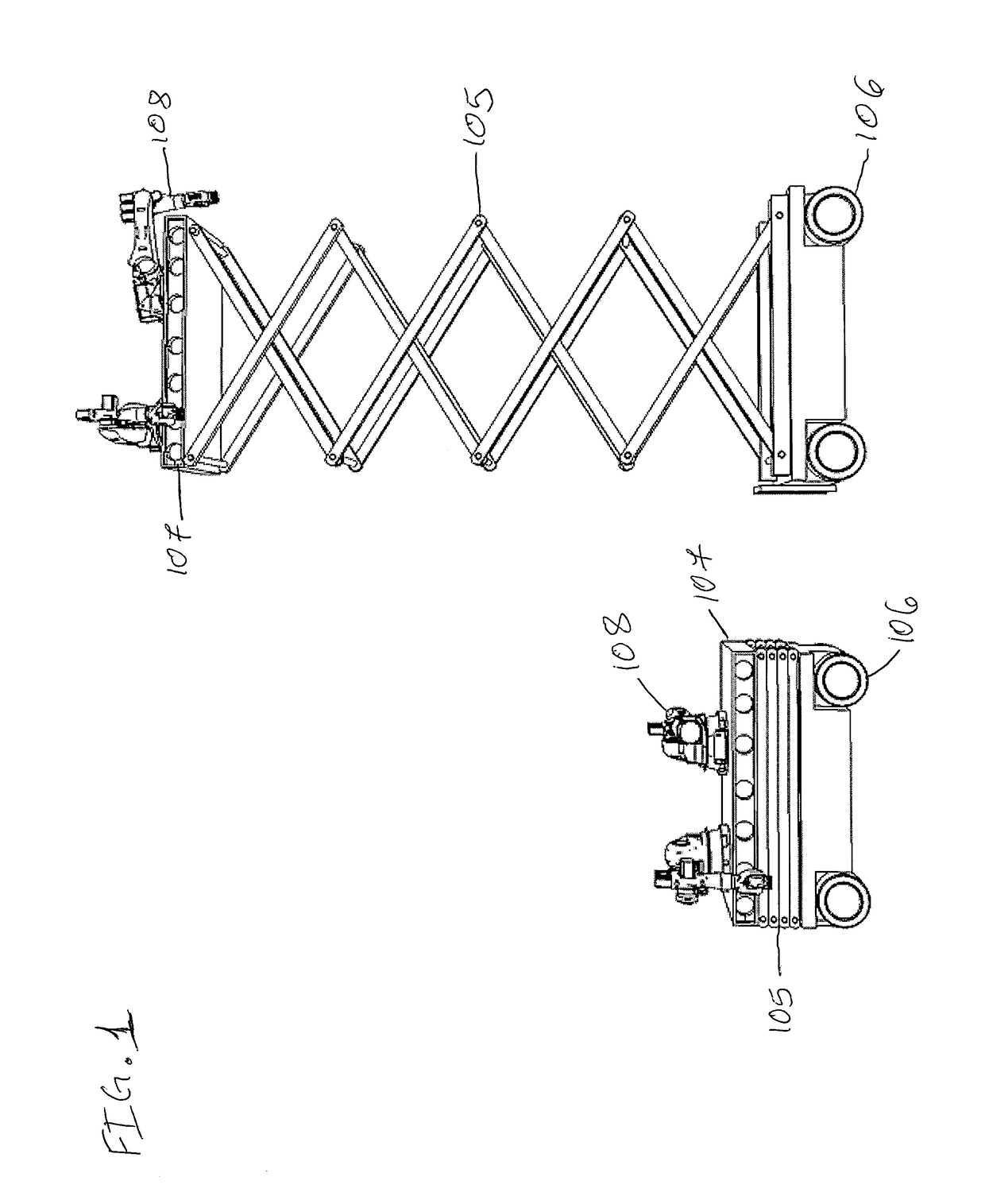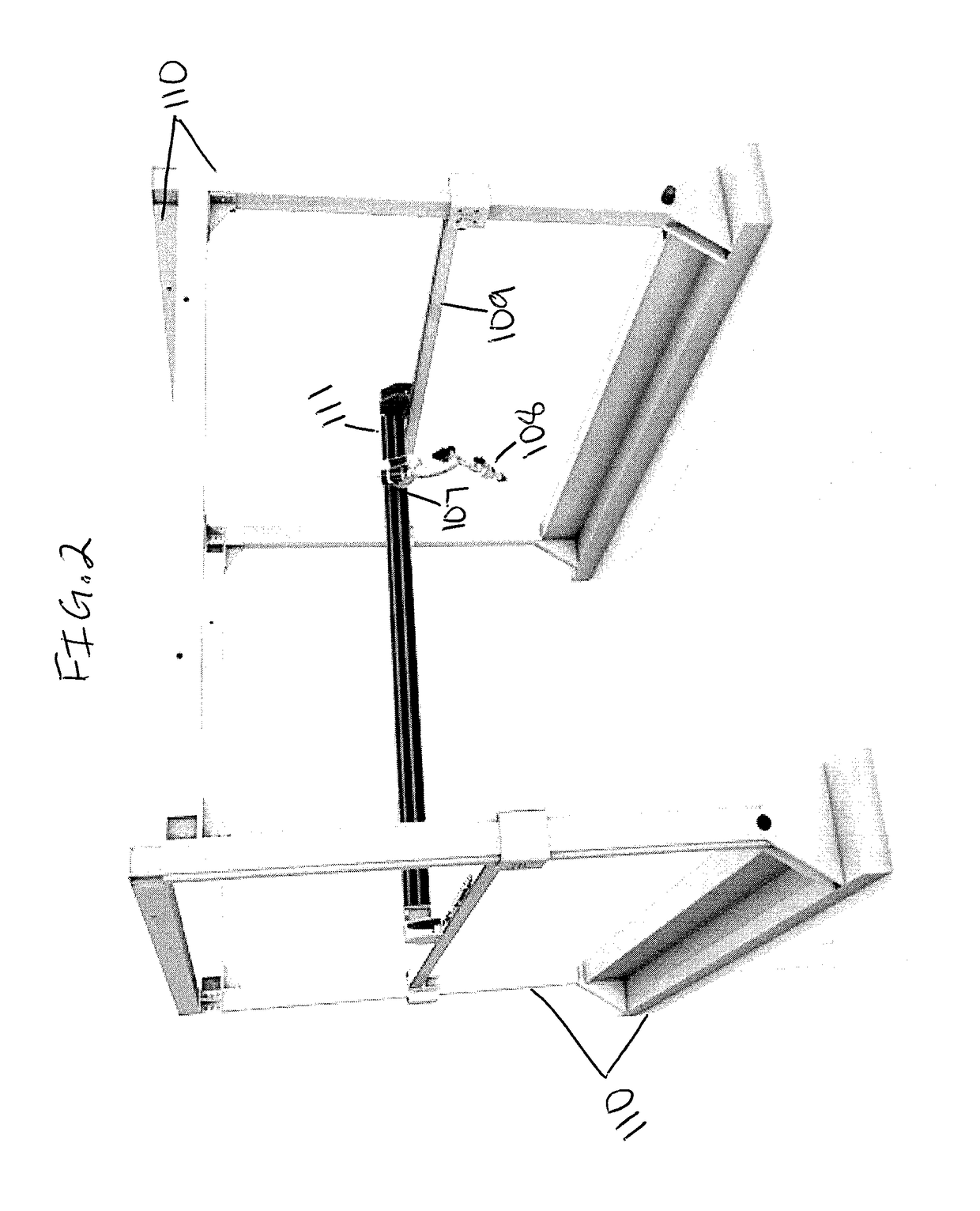Machine to Build Structures
a technology of building structures and machines, applied in the field of machines to build structures, can solve the problems of product unavailable to a majority market, enormous amounts of human labor, skyrocketing total cost, etc., and achieve the effects of facilitating adaptation to use, and enhancing the quality and speed of traditional construction and manufacturing methods
- Summary
- Abstract
- Description
- Claims
- Application Information
AI Technical Summary
Benefits of technology
Problems solved by technology
Method used
Image
Examples
Embodiment Construction
1. Definitions
[0045]Extrusion is a process used to create objects of a fixed cross-sectional profile. A material is pushed through a die of the desired cross-section.
[0046]In robotics, an end effector is the device at the end of a robotic arm, designed to interact with the environment. The exact nature of this device depends on the application of the robot.
2. Best Mode of the Invention
[0047]FIG. 1 shows a side view of the best mode contemplated by the inventor of the machine to build structures according to the concepts of the present invention. Its design incorporates omni-directional wheels (106) which will allow movement to the platform in any direction. Uses one or more robotic arms (108) as replacement for current conventional extruders to expand on the flexibility that the machine could possess, since essentially almost any tool could be incorporated to do a specific job now that we have an infinite and free range of movements, not limited to any space and giving us the opport...
PUM
| Property | Measurement | Unit |
|---|---|---|
| sharp angles | aaaaa | aaaaa |
| construction time | aaaaa | aaaaa |
| flexibility | aaaaa | aaaaa |
Abstract
Description
Claims
Application Information
 Login to View More
Login to View More - R&D
- Intellectual Property
- Life Sciences
- Materials
- Tech Scout
- Unparalleled Data Quality
- Higher Quality Content
- 60% Fewer Hallucinations
Browse by: Latest US Patents, China's latest patents, Technical Efficacy Thesaurus, Application Domain, Technology Topic, Popular Technical Reports.
© 2025 PatSnap. All rights reserved.Legal|Privacy policy|Modern Slavery Act Transparency Statement|Sitemap|About US| Contact US: help@patsnap.com



